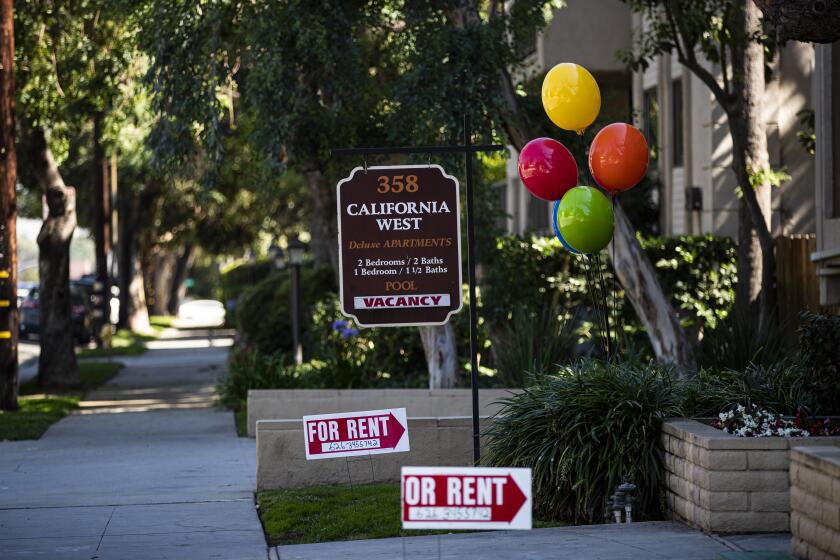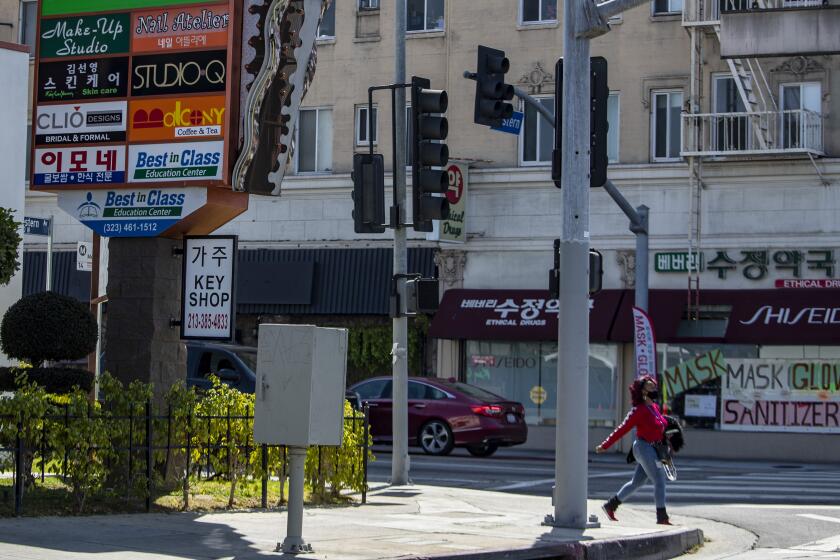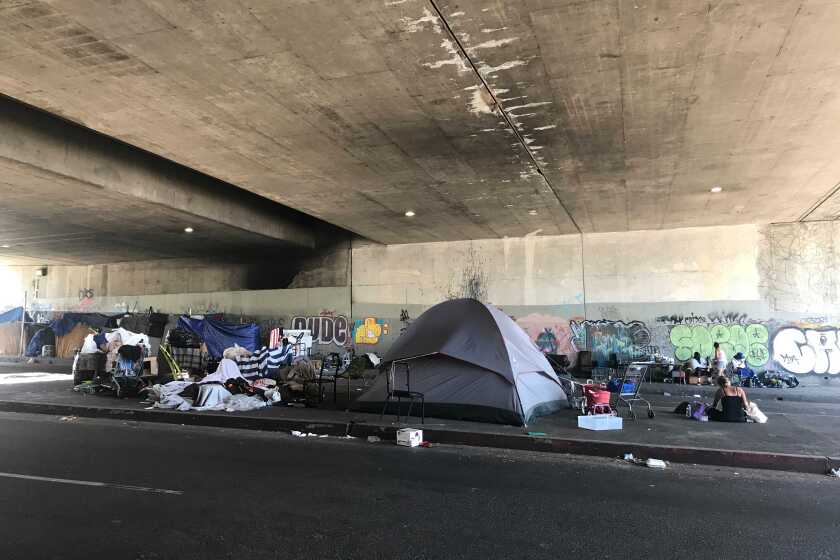Opinion: Another consequence of the L.A. housing crisis: The Fresno housing crisis

When I was 7, my mom and I were displaced from our two-bedroom apartment in Fresno. With nowhere else to go, we bounced from shelter to shelter, feelings of shame, hopelessness and helplessness following us wherever we went.
I spent most of my young life thinking something was wrong with us. The truth is that we were among millions of Californians who have lost their homes across the state, and not just in its most notoriously expensive cities.
As skyrocketing housing costs in Los Angeles and the Bay Area push more people into outlying regions, those places have increasingly experienced the same pressures. Communities such as Fresno, once known as a relatively affordable oasis in a costly state, are the newest epicenters of California’s housing crisis. One study found that Fresno endured the fastest rent growth of any major city nationwide in 2021, 28%.
We want to hear how you navigated the costly housing market in L.A. Tell us your story.
A young Fresno native, Miracle Jackson, recently recounted her two-year search for stable housing in the area, noting that she nevertheless considers herself “one of the lucky ones” in a crisis that has left others even worse off. Many of the city’s families are one financial emergency away from eviction and possibly homelessness. The Fresno region recently reported a nearly 16% increase in its unhoused population over the previous two years even though the city already had a higher rate of unsheltered homelessness than any other major urban center nationwide.
The crisis is particularly hard on young people in newly unaffordable communities. A recent survey of young California voters found that 40% had taken on second jobs, nearly as many had considered leaving the state due to the cost of living, and almost a quarter had missed a rent payment, with half citing housing or homelessness as their top concern. The poll found young people in the Central Valley to be among the state’s most pessimistic.
That may be partly because families in cities such as Fresno face a devastating combination of deep need and political neglect. Last spring, teams of young people and volunteers with Power California and the Fresno Housing Coalition contacted more than 1,000 Fresno voters from across the political spectrum and found that the overwhelming majority support rent control and tenant protections. A report commissioned by the city found similar needs. And yet the city’s mayor and council have taken few steps to protect renters.
We were first-generation Latina home buyers seeking to get our family out of a crowded 450-foot apartment. Here’s how our housing search went.
Fresno Mayor Jerry Dyer, who has proudly trumpeted devastating rent increases as evidence that the city “has the hottest real estate market in the U.S.,” has said rent control would drive away developers. One City Council member said he hesitated to support such policies because business and real estate interests would make large political contributions to unseat anyone who did so.
Although a majority of its households pay rent, Fresno is one of only two major cities in California without rent control, the best immediate defense against rapidly rising rents and displacement. That leaves its residents more vulnerable to escalating housing costs than much smaller cities in Southern California and across the state.
Given the inaction at the local level, residents of cities such as Fresno rely on state housing and homelessness policies even more than other Californians. Just last month, my mom’s landlord threatened to raise her rent by 40%, which could have left her homeless if not for a 2019 law capping rent increases statewide.
Getting people off the streets and into temporary shelter isn’t the only answer to L.A.’s homelessness problem. We need more permanent housing solutions.
We need more such state-level responses to the problem. State Sen. María Elena Durazo’s Senate Bill 567, for example, would protect more tenants by stopping landlords from finding loopholes around the very few existing tenant protection policies and strengthening enforcement.
Renters and activists in Fresno have won additional funding for eviction protection, mobile home rehabilitation and a youth LGBTQ+ shelter. But that won’t be enough to address the housing affordability crisis that is now at our front door, a far-flung consequence of the forces driving the crisis in L.A. and other coastal metropolises.
We need to understand that failing to address the housing crisis in Southern California and the Bay Area has exported the hardship to the Central Valley and beyond. And we need strong, statewide protections against predatory rent increases and eviction that we won’t get until Californians demand them.
Young people in Fresno shouldn’t be forced to live with the fear and shame I felt. This city is their home, and their leaders need to make it possible for them to stay here.
Alicia Olivarez is a Fresno native and the associate director of Power California, where she leads community organizing campaigns across the Central Valley.
More to Read
A cure for the common opinion
Get thought-provoking perspectives with our weekly newsletter.
You may occasionally receive promotional content from the Los Angeles Times.













